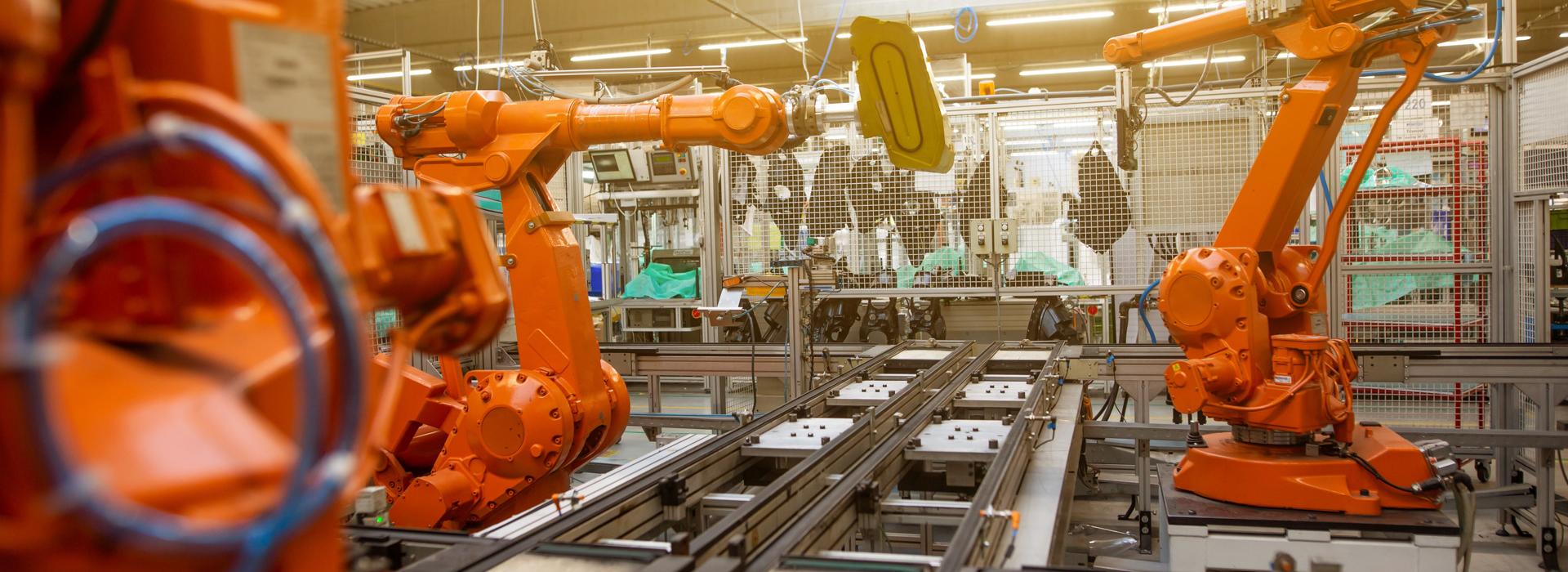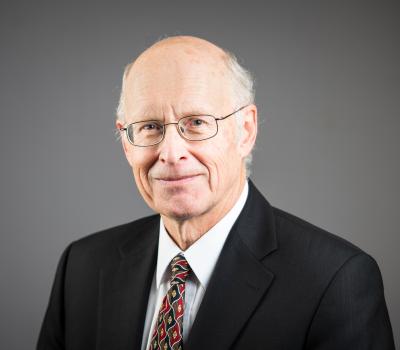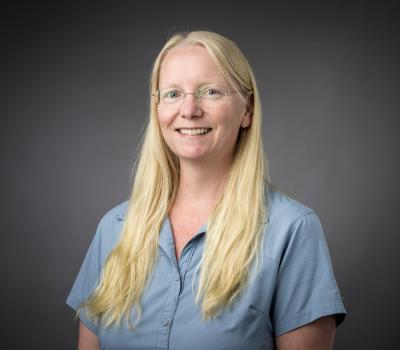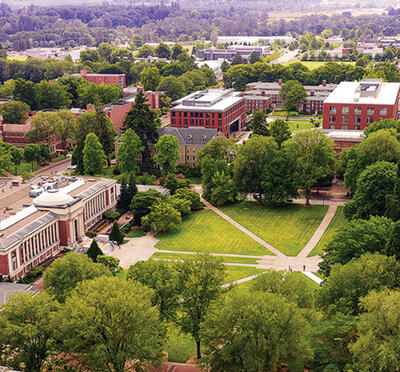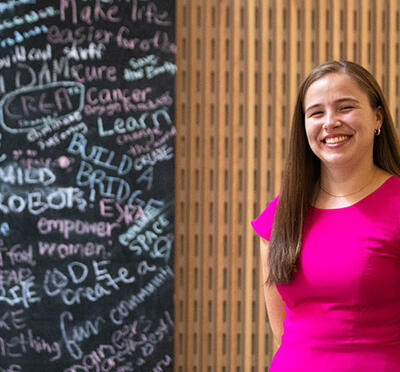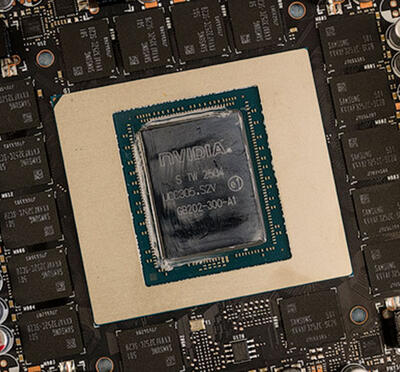Good work
When Steven Hattrup asks people what they like about their jobs, he’s not just making small talk. As a doctoral student in industrial human systems engineering and the holder of the Good Work Fellowship, Hattrup’s research focuses on designing work systems.
Much of work design has concentrated on making work systems efficient, but that often created dehumanizing conditions. Hattrup’s research looks at ways to make work fit the humans, and not the other way around.
“For example, if employees think they’re lifting too much weight, I would never suggest a weight training routine for them,” said Hattrup. “I would suggest they use a hoist or a jack that eliminates the weight that they were lifting.”
Working under the guidance of Kenneth Funk, associate professor of industrial and manufacturing engineering, Hattrup’s research looks at defining the characteristics of good work from three angles: industrial organizational psychology, industrial engineering, and sociology. He has developed a qualitative method, he said, “to find intelligent, substantiated methods to collect data, analyze the data, and do something with that to redesign the work.”
Having developed a way to define what makes good work, Hattrup’s next step is to begin a longitudinal study using these characteristics as measuring devices to design surveys and interview questions to redesign work for groups of employees. “It’s not a cookie cutter mold where we say here’s good work, apply it. It’s a specific process that caters to a specific group of employees,” he said.
As the MIME first place winner at the showcase, Hattrup was able to present his research at the College of Engineering’s Oregon Stater Awards. He was thrilled to be able to talk with alumni and industry representatives. “I met fellow industrial engineers who run companies and understand how important it is to design good work for their employees,” he said. Hattrup also made connections with local organizations where he’ll be able to apply his research.
A humanitarian approach
In humanitarian engineering, students often create solutions to help serve the basic needs of people in developing countries, such as the need for clean water, clean cooking, or health products.
Jennifer Ventrella, a recent graduate of the humanitarian engineering program (with a degree in mechanical engineering and applied anthropology), says the solution doesn’t always fit the situation.
“One of the gaps we found is that the technologies aren’t always designed to fit the context that they’re going to,” she said. “Maybe a U.S. engineer develops a water pump, but once it’s installed at its final destination, it might break or not fit how people normally get their water, and it becomes unused.”
Ventrella uses the interdisciplinary nature of her degree to first understand people and their cultures to allow others to create technologies that can best fit their needs.
Ventrella’s research focuses on monitoring cookstoves to help solve the health problems and environmental damage caused by cooking over open fires. People have developed many improved stove designs, but it’s difficult to know if they’re working as intended. “Once it actually goes into someone’s home, they might not use it consistently or maybe use too much fuel. Since that can be difficult to measure, don’t really know what true impact those stoves are having, so you really don’t have a good way of knowing if your program is successful,” said Ventrella.
Working with mechanical engineering professor Nordica MacCarty and anthropology professor Shaozeng Zhang, Ventrella designed a sensor and placed them in homes in Uganda and Honduras to monitor fuel consumption, which helps them understand how people are using the stoves and can lead to better designs.
Ventrella found it useful to present her research at the Graduate Research Showcase. “I liked both the opportunity to learn about other people’s research and then also to be able to share my own,” she said. She found it especially valuable to clearly display her results and explain to people why her research matters.
Unintended consequences
After the Titanic disaster, a new law required ships to have more lifeboats on board. In 1915, the SS Eastland was retrofitted with additional lifeboats, affecting the stability of the ship. While docked in the Chicago River and loaded with passengers, the Eastland rolled over and killed hundreds.
Hannah Walsh, a graduate student in mechanical engineering, uses this as an example of unintended consequences, a concept that’s most often used in the social sciences that she is working to apply to engineering. Unintended consequences differ from engineering failures in that unintended consequences are instances in which an engineered product is fulfilling an intended function, but is also doing something unintended. These can be positive or negative.
Working with mechanical engineering professor Irem Tumer, Walsh looked at examples of unintended consequences and defined three archetypes: unintended drawbacks (design works as intended, but has other consequences that don’t affect the original intent); sabotaging consequences (undermines the fundamental solution and is often a quick fix design decision); and perverse consequences (design decision has an opposite effect than what was planned).
Walsh developed models for each archetype using causal loop diagrams and system dynamics modeling. “The future direction of my research is to integrate these models into the engineering design process to avoid adverse unintended consequences,” she said.
At the Graduate Research Showcase, Walsh was happy to get feedback from those who stopped to find out about her research. “They want to know what the big picture is, and how the research will have a positive impact on society,” she said.
